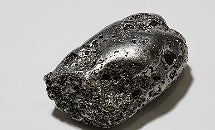
The mining industry produced some big stories in 2012. Australia introduced a 30% mining tax on coal and iron ore; violent clashes broke out between rival unions at Lonmin’s West Marikana platinum mine in South Africa; and commodities trader Glencore launched its bid to merge with Xstrata. Amid these stories, mining costs rocketed, commodity prices tumbled and companies deferred their expansion projects in the face of waning demand.
And the first two months of 2013 have been just as eventful – Chile postponed copper and gold projects valued at $39bn; Anglo American closed four mining shafts hit by South African strikes and Rio Tinto has a new CEO, after reporting a $14bn writedown.
The picture is fairly bleak, but there is a glimmer of hope for the mining and metals industry in the year ahead, as analysts begin to highlight investment opportunities in the sector, such as gold mining and work safety.
Here, we highlight some of the mining industry’s trickiest obstacles for the year ahead, as well as the most promising opportunities to exploit.
Ups 
Commodities: gold and silver prices to rise

There is no doubt that commodity prices have fallen back from peak levels, but some analysts believe the mining industry is still in a ‘super cycle’ and that the sector shouldn’t be too concerned about the recent fall in demand.
Gold is one of the preferred commodities for equity investment in 2013, with more than 80% of gold executives expecting to see a rise in the price of gold, according to the latest PwC Gold Price Report.
In its Mines and Money report published in November 2012, RFC Ambrian also believes the outlook for gold remains strong. The firm states that the US may attempt to stimulate the economy with quantitative easing programmes, which would be positive for the gold price.
As for silver, HSBC raised its 2013 price forecasts for the precious metal in February, due to higher industrial demand, strong coin and bar purchases and a bottoming out of jewellery demand. At the time of writing, the price is expected to rise by 3.1%, to $33 an ounce.
Meanwhile, the Bureau of Resources and Energy Economics in Australia has raised its price estimate of iron ore to $106 a tonne, compared with a September estimate of $101 a tonne, due to expected stimulus spending by China.
Alternative financing gains popularity

Development companies are expected to seek alternative sources of funding due to a lack of available equity capital markets options. These include commodity-based finance, such as off-takes, royalties, pre-export finance and metal streams from trade and financial investors, according to Berwin Leighton partner and co-head of mining, Alexander Keepin.
“Significant financing for development projects may also be provided by strategic partners or the company itself issuing corporate or convertible bonds which bring attractive rate of returns for investors,” said Keepin.
The emergence of exchange-traded funds has also given investors the option to invest directly into a commodity, without the operational risk associated with mining, according to RFC Ambrian. Historically, investors could only spend their money on mining equities. Mining majors are also considering higher dividend payouts to their shareholders.
Mergers and acquisitions on the increase

Another emerging trend in 2013 is the formation of joint ventures. Commodities trader Glencore and Xstrata are currently in the final stages of a $36bn merger, while Silver Lake Resources’ friendly takeover of Integra Mining is set to create one of the largest gold producers in Australia.
In its fifth annual “Tracking the Trends” report, Deloitte notes that depressed valuations and some commodity price slippage may prove “irresistible” to larger mining players with considerable cash flows. “As a consequence, we see a new wave of M&A emerging,” the report adds.
But some companies are paying the price for failed acquisitions over the last few years. In January 2013 Rio Tinto chief executive Tom Albanese stepped down after the company reported $14bn in writedowns, related to its aluminium assets and coal division in Mozambique. The company paid $4.2bn to buy coal miner Riversdale in 2011, but production estimates slumped after a plan to transport coal by barge along the Zambezi River failed to win approval.
Trend for improving mining safety

Minimising risk and improving safety outcomes is another trend for 2013.
A report by Ventyx, an ABB company, revealed in January that major mining companies across the globe now consider work safety as their highest priority.
The survey consolidated the views of 374 mining companies demonstrating worker safety (31%) and managing capital projects (25%) as their main concerns, with maximising production effectiveness (21%) following closely behind.
But this doesn’t mean the industry is anywhere near reaching safety perfection, says Deloitte in its Tracking the Trends report.
“Investment in education and training needs to continue for improvement to continue,” the risk management firm states.
Downs 
Resource nationalism a threat

Resource nationalism was one of the biggest risks faced by the mining industry in 2012, and the trend is set to continue in 2013. Last year there were a number of countries pushing for greater domestic ownership of mining projects, including Bolivia, which announced the nationalisation of silver and indium mine Mallku Khota, operated by Canada’s South American Silver in July.
A report published in January by UK-based risk consultancy Maplecroft classified 21 countries, including Venezuela, Libya and Equatorial Guinea, as “extreme risk” mining destinations for privately owned businesses.
The report notes that given persistently high commodity prices, the risk of resources nationalism is likely to grow in 2013. “As the tactics used by governments to extract value from their natural resources grow more sophisticated, they will become difficult to avoid,” Maplecroft said.
Andrew Wheeler, mining practice leader of mining at insurance broker Willis said that one way in which foreign investors may mitigate the risk of resource nationalism is by “building relations with the host state by adopting a sound corporate social responsibility strategy, such as healthcare initiatives, building schools and other community projects.”
Government policies may sink mining markets

Australia has its own level of resource nationalism in the form of the minerals resources rent tax (MRRT) introduced in July. While little money was made from the 30% tax on coal and iron ore in 2012 – just $130m compared to the $2bn target – analysts fear the levy could be spread to other commodities if Labor is re-elected in September 2013.
Dan Lougher, managing director of nickel miner Western Areas told the Australian in January: “One of our concerns if Labor gets back in is will they change that tax when they see that they’re not making much money, and will they introduce it to other commodities?”
Mining firms operating in Australia, including Rio Tinto and Fortescue, have spoken out against nationalisation, encouraging the government to focus on royalty schemes instead.
Meanwhile in South Africa, a Mineral Pertoleum Resources Development Amendement Bill approved by the Cabinet in December is threatening to sink the country’s already-struggling mining sector, which has been hit by a series of strikes since August last year.
The main concerns will the bill relate to increased ministerial control and the possibility of an export licensing regime. As part of the bill, the mineral resources minister is expected to set the percentage per commodity and price that is required for beneficiation.
In Mongolia, coal, copper, gold and silver deposits could also be governed by a regulatory framework – the Minerals Law. If the bill is passed, it will change the way mining licences are awarded and maintained, says a summary from law firm Hogan Lovells published in December.
Skills shortages will remain

The global skills shortage and infrastructure access retained second and third spots on the risk rankings in 2012, according to the ‘Business risks facing mining and metals’ report by Ernst and Young, with Australia, Canada, Indonesia, Mongolia and Brazil all facing this challenge.
This trend is set to continue in 2013. The Minerals Council of Australia predicts the need for an additional 86,000 mining professionals and skilled mine workers by 2020.
But, the latest Manpower Employment Outlook Survey shows that hiring intentions in mining is set to slump in the country this year.
In Canada, labour market studies show that mining will need to hire 10,000 workers every year for the next ten years to reverse the skills shortage, according the Mining Association of Canada president and CEO Pierre Gratton.
Rising operations and labour costs

Rising development and labour costs hit profits hard in 2012 and contributed to writedowns recorded by Anglo American, Kincross and Vale, to name a few.
Looking at the year ahead, the cost of doing business is only going to get more expensive.
Deloitte’s ‘Tracking the Trends’ report notes that currency volatility relative to the US dollar has pushed up local prices for equipment, raw materials and labour in mining regions in Australia, South Africa, Canada and Latin America.
Worker demands for higher salaries, particularly in South Africa, are also driving labour costs to unprecedented highs, while energy and water shortages in many mining regions are raising input costs.
“These costs will rise as mining companies move to increasingly remote regions in search of higher-grade deposits,” the report adds.
Commodities: platinum production low, REM prices fall

The price of platinum has risen ten percent since last year and stood at $1,727 a troy ounce at the time of writing.
But production of the metal is low after Anglo American Platinum, which accounts for 40% of global supplies of platinum, was forced to shut four mining shafts in South Africa in January, after hundreds of workers downed tools.
As for rare earth minerals, prices are falling owing to the launch of two new miners, Molycorp and Lynas, coming online in the US and Australia.
While China once dominated the market, REMs are being discovered all over the world. In January, China’s largest rare earth minerals producer Baotou Hi-Tech said it expects 2012 profits to fall by between 50 and 60%.
Related content
An appetite for risk – talking remote commodities with Major Drilling
As resources dwindle, mining companies are being forced to mine in ever more remote and obscure locations.
Raise bore drilling: mining South Africa’s heart of gold
Deep in the heart of AngloGold Ashanti’s South African gold mines, there are plans afoot to catapult the African nation back to the top of the global gold mining industry.



